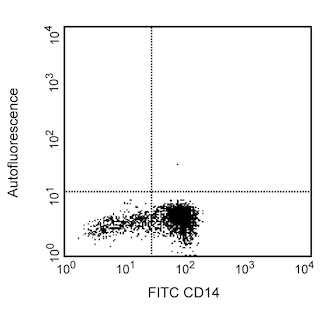-
Training
- Flow Cytometry Basic Training
-
Product-Based Training
- BD FACSDiscover™ S8 Cell Sorter Product Training
- Accuri C6 Plus Product-Based Training
- FACSAria Product Based Training
- FACSCanto Product-Based Training
- FACSLyric Product-Based Training
- FACSMelody Product-Based Training
- FACSymphony Product-Based Training
- HTS Product-Based Training
- LSRFortessa Product-Based Training
- Advanced Training
-
- BD FACSDiscover™ S8 Cell Sorter Product Training
- Accuri C6 Plus Product-Based Training
- FACSAria Product Based Training
- FACSCanto Product-Based Training
- FACSLyric Product-Based Training
- FACSMelody Product-Based Training
- FACSymphony Product-Based Training
- HTS Product-Based Training
- LSRFortessa Product-Based Training
- United States (English)
-
Change country/language
Old Browser
This page has been recently translated and is available in French now.
Looks like you're visiting us from {countryName}.
Would you like to stay on the current country site or be switched to your country?


.png)

Flow cytometric analysis of HLA-G expression on human JEG-3 cells. Cells from the human JEG-3 (Choriocarcinoma, ATCC HTB-36) cell line were preincubated with BD Pharmingen™ Human BD Fc Block™ (Cat. No. 564219/564220) and then stained with either PE Mouse IgG2a, κ Isotype Control (Cat No. 554648, dashed line histogram) or PE Mouse Anti-Human HLA-G (Cat No. 566904; solid line histogram). The fluorescence histogram showing HLA-G expression (or Ig Isotype control staining) was derived from gated events with the forward and side light-scatter characteristics of viable human JEG-3 cells. Flow cytometric analysis was performed using a BD FACSCelesta™ Flow Cytometer System and FlowJo™ software.
.png)

BD Pharmingen™ PE Mouse Anti-Human HLA-G
.png)
Regulatory Status Legend
Any use of products other than the permitted use without the express written authorization of Becton, Dickinson and Company is strictly prohibited.
Preparation And Storage
Product Notices
- This reagent has been pre-diluted for use at the recommended Volume per Test. We typically use 1 × 10^6 cells in a 100-µl experimental sample (a test).
- An isotype control should be used at the same concentration as the antibody of interest.
- Source of all serum proteins is from USDA inspected abattoirs located in the United States.
- Caution: Sodium azide yields highly toxic hydrazoic acid under acidic conditions. Dilute azide compounds in running water before discarding to avoid accumulation of potentially explosive deposits in plumbing.
- For fluorochrome spectra and suitable instrument settings, please refer to our Multicolor Flow Cytometry web page at www.bdbiosciences.com/colors.
- Please refer to http://regdocs.bd.com to access safety data sheets (SDS).
- Please refer to www.bdbiosciences.com/us/s/resources for technical protocols.
Companion Products





The 87G monoclonal antibody specifically recognizes Human Leukocyte Antigen G (HLA-G) which is encoded by HLA-G (major histocompatibility complex, class I, G). HLA-G is a nonclassical Major Histocompatibility Complex class I (MHC-Ib) molecule that is structurally related to the classical MHC class Ia antigens (HLA-A, -B, -C). Several HLA-G isoforms have been described including transmembrane HLA-G1, -G2, -G3, -G4 and soluble HLA-G5, -G6, and -G7. The 87G monoclonal antibody reportedly recognizes a conformationally-dependent epitope on the heterodimeric transmembrane HLA-G1 and soluble HLA-G7 isoforms that consist of an HLA-G alpha chain and β2-microglobulin (β2m). HLA-G1 is variably expressed on placental trophoblast cells, thymic epithelial cells, activated monocytes, macrophages, dendritic cells, and tumor cells. Heterodimeric HLA-G shows limited variation and binds a limited variety of self-peptides derived from intracellular proteins including histones and ribosomal proteins. This molecule binds to inhibitory receptors such as CD85d, CD85j, and CD158d that are differentially expressed by NK cells, T cells, monocytes, dendritic cells, and B cells. This interaction exerts suppressive regulation of immune responses and is thought to help safeguard maternal tolerance of the fetus during pregnancy. The 4H84 monoclonal antibody that reportedly recognizes denatured forms of HLA-G1 and HLA-G2 has also been described.

Development References (6)
-
Dorling A, Monk NJ, Lechler RI. HLA-G inhibits the transendothelial migration of human NK cells. Eur J Immunol. 2000; 30(2):586-593. (Biology). View Reference
-
King A, Allan DS, Bowen M, et al. HLA-E is expressed on trophoblast and interacts with CD94/NKG2 receptors on decidual NK cells. Eur J Immunol. 2000; 30(6):1623-1631. (Biology). View Reference
-
Le Gal FA, Riteau B, Sedlik C, et al. HLA-G-mediated inhibition of antigen-specific cytotoxic T lymphocytes. Int Immunol. 1999; 11(8):1351-1356. (Biology). View Reference
-
Lee N, Malacko AR, Ishitani A, et al. The membrane-bound and soluble forms of HLA-G bind identical sets of endogenous peptides but differ with respect to TAP association. Immunity. 1995; 3(5):591-600. (Immunogen: ELISA, Flow cytometry). View Reference
-
Odum N, Ledbetter JA, Martin P, et al. Homotypic aggregation of human cell lines by HLA class II-, class Ia- and HLA-G-specific monoclonal antibodies.. Eur J Immunol. 1991; 21(9):2121-31. (Immunogen: Functional assay). View Reference
-
Yang Y, Chu W, Geraghty DE, Hunt JS. Expression of HLA-G in human mononuclear phagocytes and selective induction by IFN-gamma.. J Immunol. 1996; 156(11):4224-31. (Clone-specific: Flow cytometry, Immunohistochemistry). View Reference
Please refer to Support Documents for Quality Certificates
Global - Refer to manufacturer's instructions for use and related User Manuals and Technical data sheets before using this products as described
Comparisons, where applicable, are made against older BD Technology, manual methods or are general performance claims. Comparisons are not made against non-BD technologies, unless otherwise noted.
For Research Use Only. Not for use in diagnostic or therapeutic procedures.
Report a Site Issue
This form is intended to help us improve our website experience. For other support, please visit our Contact Us page.